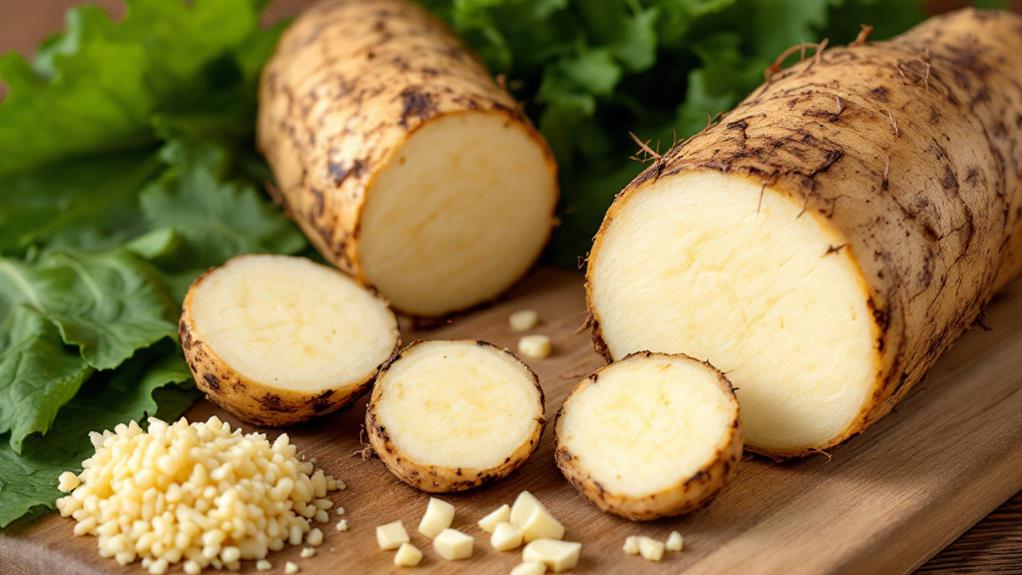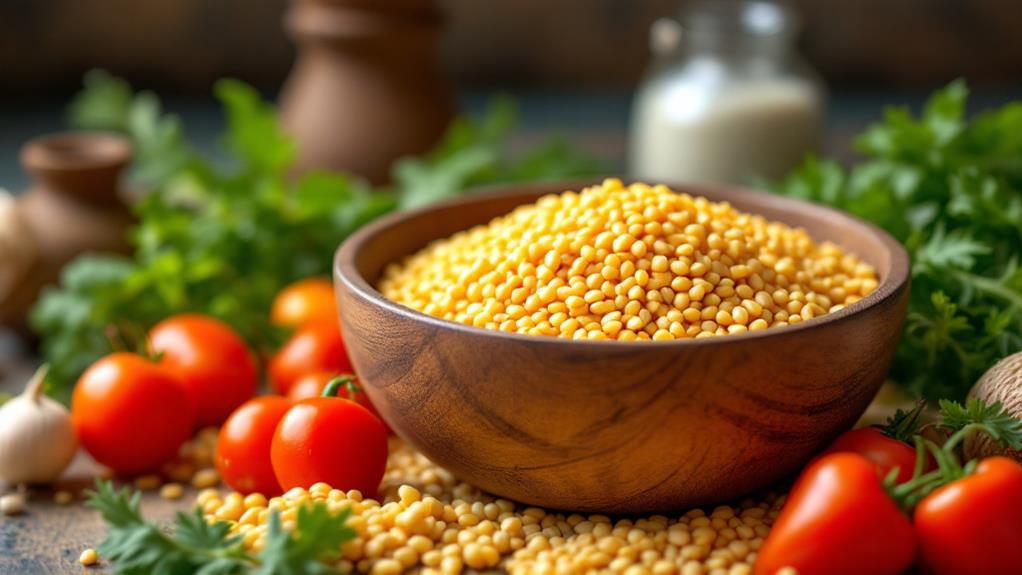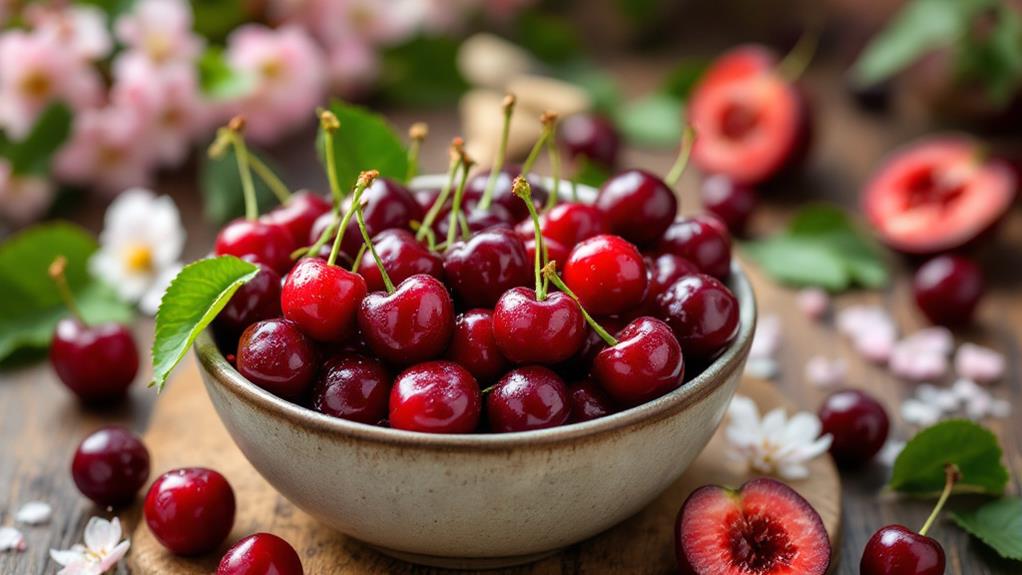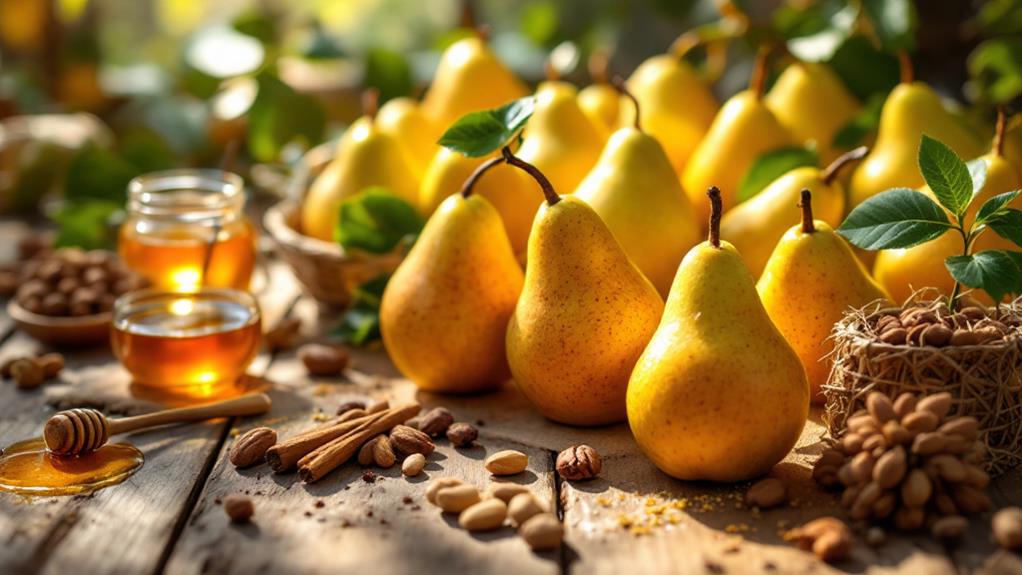Phaleria Macrocarpa: A Guide to Its Benefits and Uses
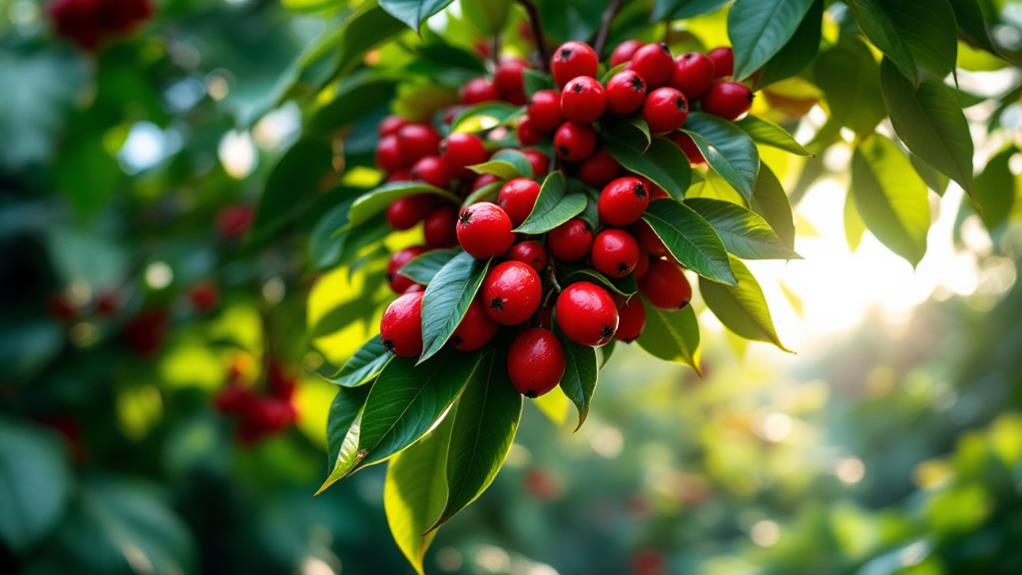
Uncover Phaleria Macrocarpa, an Indonesian and Malaysian native plant famed for its health benefits. You can use its fruits and leaves in traditional medicine to help manage diabetes, tumors, and allergies. Packed with bioactive compounds like phalerin and flavonoids, it offers strong antioxidant and anti-inflammatory properties. Regardless of if you're making herbal teas or exploring its potential in cancer research, caution is key. Its seeds must be cooked due to toxicity. Safe use requires adherence to dosage recommendations. This powerful plant intrigues researchers with its potential. Uncover more about its extraordinary health benefits and safe usage practices.
Botanical Description
In the domain of tropical flora, Phaleria macrocarpa stands out as a remarkable evergreen shrub or small tree native to Indonesia and Malaysia. Known as Mahkota dewa, this plant thrives in tropical regions, reaching heights between 1 to 18 meters. Its dark green leaves, which stretch 7 to 14 cm, are simple and have a coriaceous texture, giving the plant a unique and robust appearance. The smooth bark of the tree, occasionally slightly wrinkled, is brownish and complements the verdant foliage beautifully.
Phaleria macrocarpa is not only visually striking but also functionally significant. Its fragrant, tubular flowers, grouped in clusters of 2 to 5, improve its ornamental appeal. However, it's the plant's eclipse-shaped fruit that truly sets it apart. Measuring about 3 cm in diameter, the fruit evolves from green to a lively red as it ripens, signaling the presence of bioactive compounds. These compounds are linked to multiple medicinal properties, which have been utilized in traditional medicinal applications. The tree's roots also exude a sap used for similar purposes, highlighting the plant's versatility and cultural significance in its native regions.
Traditional Medicinal Uses
Phaleria macrocarpa, or Mahkota dewa, holds a revered place in traditional medicine across Indonesia and Malaysia, where it's used to address a variety of ailments. As an herbal remedy, Phaleria macrocarpa is celebrated for its versatile medicinal uses. In traditional practices, this plant tackles serious conditions like diabetes, tumors, and blood diseases. Its leaves are known for treating impotence and allergies, while you might find its fruits in herbal teas, renowned for their health benefits.
In Papua New Guinea, the significance of Phaleria macrocarpa in local herbal medicine is profound, serving as a go-to for numerous health issues. Stomachaches and diarrhea are commonly managed using this plant, with the stems specifically noted for their use against bone cancer. However, be cautious with the seeds; they're toxic unless cooked, which makes them safer for consumption.
Here are some notable traditional medicinal uses:
- Treats diabetes, tumors, and blood diseases
- Addresses impotence and allergies with leaves
- Incorporated into teas for general health benefits
- Used in Papua New Guinea for diverse health issues
Bioactive Compounds
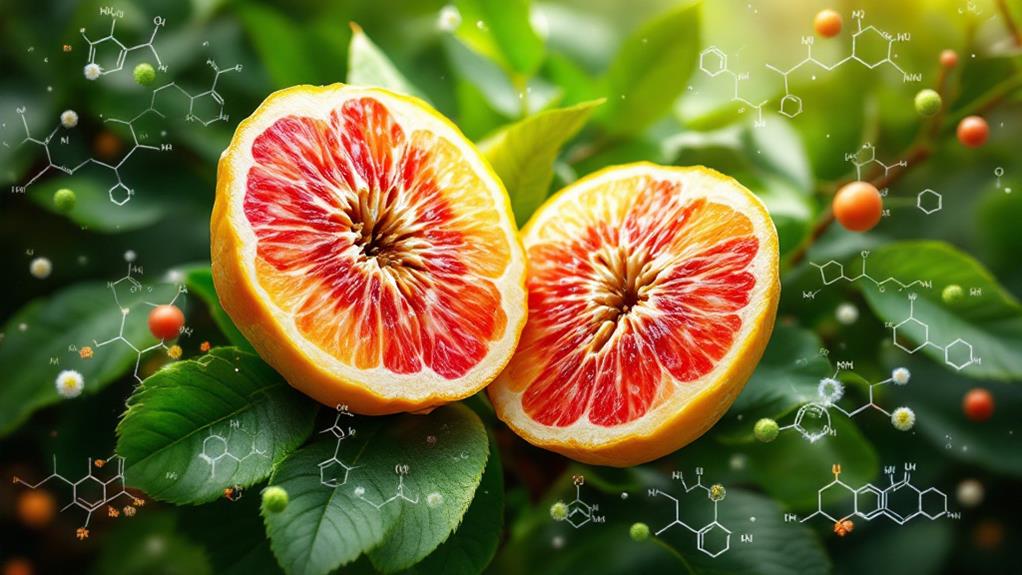
While Phaleria macrocarpa's traditional uses are impressive, its true power lies in the bioactive compounds that give this plant its medicinal prowess. Explore its phytochemical composition, and you'll find a rich blend of phalerin, gallic acid, and flavonoids. These compounds stand out due to their high phenolic content, with the mesocarp boasting up to 60.5 mg GAE/g DW. The pericarp, on the other hand, shines with a significant flavonoid content of 161.3 mg rutin equivalent/g DW.
The therapeutic applications of Phaleria macrocarpa are improved by its potent antioxidant activity, evidenced by DPPH radical scavenging percentages of up to 71.97% in pericarp extracts. This antioxidant prowess makes it a promising candidate for anti-inflammatory and anti-cancer research. Particularly, methanol extracts reveal up to 9.52% phalerin content, a key player in combating cancerous cells and managing blood sugar levels.
Health Benefits
Although often overlooked in mainstream discussions, the health benefits of Phaleria macrocarpa are both wide-ranging and powerful. If you're exploring natural health solutions, macrocarpa deserves your attention. Its extracts display remarkable anti-cancer properties, particularly against breast cancer. Through apoptosis, they induce DNA fragmentation and activate caspases, effectively targeting tumor cell lines. Furthermore, macrocarpa's antihyperglycemic effects are impressive, reducing blood glucose levels in diabetic rats by up to 56.25%. This is largely due to phalerin, a potent component that can help manage diabetes.
In addition, macrocarpa is a strong antioxidant. Its pericarp extracts exhibit a DPPH radical scavenging activity of 71.97%, showcasing its capability in free radical scavenging and helping protect your cells from oxidative stress. The fruit and leaves also offer anti-inflammatory benefits. Mesocarp extracts inhibit nitric oxide production by 69.5% in macrophage cell lines, making them useful in managing inflammation.
Phaleria macrocarpa also improves your immune system. Its immunomodulatory effects elevate natural killer cell activity and promote interferon-gamma production, strengthening your body's defenses.
- Anti-cancer properties through apoptosis induction
- Diabetic benefits with phalerin's influence on blood sugar
- Antioxidant capability with free radical scavenging
- Anti-inflammatory action in cell lines
Extraction Techniques

When extracting bioactive compounds from Phaleria macrocarpa, precision is key to revealing its full potential. Different extraction techniques, like reflux extraction with methanol, help you isolate potent phytochemicals from the fruit's distinct components—pericarp, mesocarp, and seed. Each part is separated and analyzed individually to understand its unique phytochemical profile and antioxidant activity. You'll find the pericarp especially notable, often showing the highest antioxidant activity in DPPH assays compared to mesocarp and seed extracts.
To gauge the total phenolic content in these extracts, use the Folin-Ciocalteu reagent method. This method gives you a precise measurement of phenolic compounds, which are essential for the antioxidant properties of Phaleria macrocarpa. Meanwhile, the total flavonoid content is determined through a colorimetric method involving sodium nitrite and aluminum chloride. Both phenolic and flavonoid contents are crucial indicators of the extract's potential efficacy.
Standardizing these extraction methods guarantees reproducibility, which is vital for any future pharmaceutical applications. By mastering these techniques, you can harness the full spectrum of benefits this remarkable fruit offers, ensuring that each extract is both potent and reliable.
Safety and Toxicology
Exploring the safety and toxicology of Phaleria macrocarpa is vital to guarantee its therapeutic benefits don't come with undue risks. Though this plant holds promise, its use is not without potential hazards. Limited toxicity studies suggest that unprocessed ripened fruits can cause oral ulcers, while doses exceeding 27 mg/kg may lead to embryo-fetotoxicity in female mice. It's important to take these factors into account when determining safe dosage levels.
Butanol extracts of Phaleria macrocarpa present a particular concern, as doses above 85 mg/kg have been linked to mild kidney necrosis in mice. This highlights the significance of careful dosage regulation to prevent adverse effects. In contrast, an acute toxicity study of liquid carbon dioxide extract shows a high LD50 of 3000 mg/kbw, suggesting a relatively safe profile at controlled dosages.
To summarize, keep the following points in mind:
- Unprocessed ripened fruits may cause oral ulcers.
- Doses over 27 mg/kg show embryo-fetotoxicity in female mice.
- Butanol extracts above 85 mg/kg can cause mild kidney necrosis.
- Recommended safe dosage is 500 mg/kbw for therapeutic benefits.
Ensure you approach Phaleria macrocarpa with caution, respecting recommended dosages to minimize risks.
Future Research Directions

Future research on Phaleria macrocarpa should prioritize thorough toxicity evaluations of its extracts, particularly those derived from fruits and seeds, to establish safe dosage levels and identify potential side effects. You should also focus on exploring in-vivo anticancer effects, since much of the current knowledge comes from in-vitro assays lacking clinical evidence. Understanding how these bioactive compounds work in live organisms can provide valuable insights into their therapeutic applications.
To improve the reliability of pharmacological studies, standardizing extraction methods and quantifying bioactive compounds is essential. This guarantees that findings are reproducible and accurate. Investigating the synergistic effects of the diverse phytochemicals could unearth new therapeutic applications, especially for chronic diseases like diabetes and cancer. You need to understand how these compounds interact to optimize their health benefits.
Research should explore the mechanisms of action underlying the observed antioxidant properties and anti-inflammatory mechanisms. By clarifying these processes, you can better assess their potential in modern medicine. Addressing these future research directions will advance our understanding of Phaleria macrocarpa's benefits and guarantee its safe and effective use in therapeutic settings.

